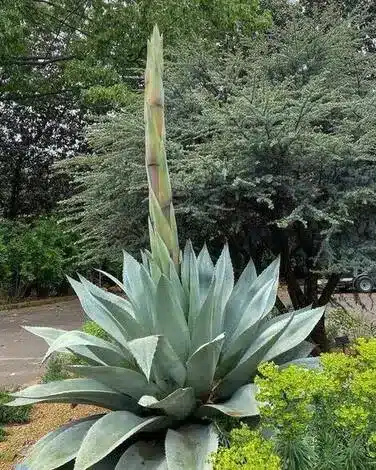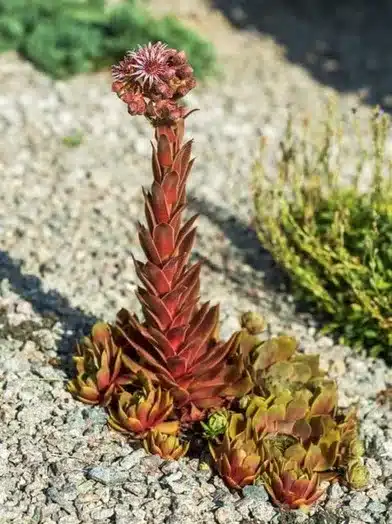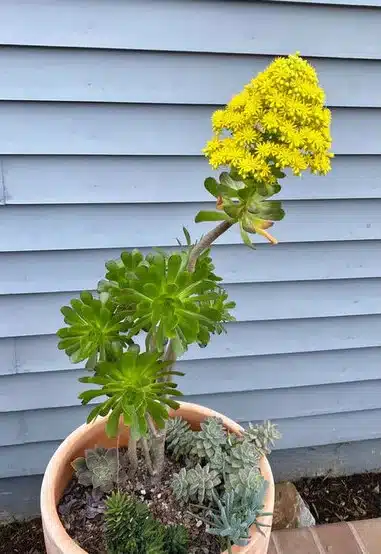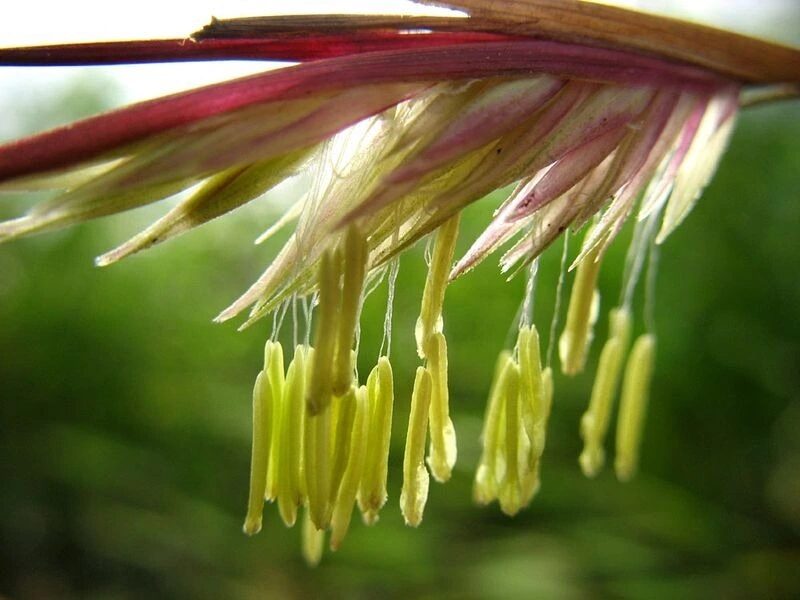The term “death bloom” is sometimes used to describe the natural process by which a plant dies after it has bloomed and produced seeds. In some species, this process is known as monocarpic senescence, where the plant undergoes rapid growth and reproduction before eventually dying.

Some succulent plants, such as Agave and Sempervivum, are known to be monocarpic, meaning they will eventually die after blooming. However, not all succulents are monocarpic and can continue to produce new growth and bloom year after year.
5 Common Monocarpic Plants
Monocarpic plants die after they have produced flowers and seeds once in their lifetime. Here, we will explore five common monocarpic plants: Agave, Sempervivum, Aeonium, Bamboo, and Pacific yew.
1. Agave

Agave is a succulent plant genus known for its impressive size and striking appearance. These plants can take several years to reach maturity and produce a tall flower spike that can reach up to 30 feet in height.
After flowering, the plant will die, producing offsets or “pups” that can be replanted to continue the cycle. Agaves are native to the arid regions of Mexico and the southwestern United States.
They are known for their tough leaves, which are often sharp, and spiky leaves, making them ideal for dry climates. Agaves are a popular choice for landscaping and can be grown in pots or on the ground. They don’t need a lot of irrigation and are rather simple to maintain.
2. Sempervivum
Sempervivum is a genus of succulent plants commonly known as “hen and chicks.” These plants have small, rosette-shaped leaves that grow in clusters. Each rosette will produce flowers and die, but the plant will produce new offsets or “chicks” to continue the cycle.
Sempervivum is native to Europe and northern Africa and famous for rock gardens and other dry, sunny locations. These plants are hardy and can survive in extreme temperatures and drought conditions. They also require little watering and are often simple to maintain.

3. Aeonium

Aeonium is a genus of succulent plants native to the Canary Islands, Morocco, and East Africa. Most species in this genus are monocarpic, meaning they will produce flowers and then die.
Note: Some species of Aeonium can repeatedly bloom without dying, especially those with a shrub-like growth habit.
The exact lifespan of Aeonium plants can vary depending on the species and growing conditions. Still, most monocarpic Aeonium plants will live for several years before producing an enormous flower spike and dying.
However, like other monocarpic plants, Aeonium typically produces offsets or “pups” before dying, allowing the plant to propagate and continue its life cycle.
4. Bamboo
Bamboo is a fast-growing, woody grass native to many parts of the world, including Asia, Africa, and the Americas.
While many bamboo species are not monocarpic, some are, meaning they will die after producing flowers and seeds. This can take many years, as bamboo typically flowers on a long cycle of 10 to 120 years.

Bamboo is known for its rapid growth and versatility. It can be used for a variety of things, like clothing, furniture, and building materials. Bamboo is also famous for landscaping, providing shade, privacy, and a natural aesthetic.
5. Pacific yew

The Pacific yew is a coniferous tree that is native to the Pacific Northwest of North America. It is monocarpic, meaning it can take up to 400 years to reach maturity and produce seeds, after which it will die.
Pacific yew is known for its dense, durable wood, often used for furniture and other high-quality products. It is also an essential source of taxol, a chemotherapy drug used to treat certain types of cancer.
How to Care for Monocarpic Succulents during the Death Bloom Process?
Caring for monocarpic succulent plants during the death bloom process can help ensure that the plant’s offspring, or “pups,” are healthy and have the best chance of surviving. Here are some tips on how to care for monocarpic succulents during the death bloom process:
- Water the plant sparingly: During the death bloom process, the plant uses up much of its energy to produce flowers and seeds. As a result, it is crucial to water the plant sparingly to avoid overwatering and potentially causing root rot. Allow the soil to dry out completely between waterings.
- Provide adequate sunlight: Monocarpic succulent plants typically require plenty of sunlight to mature and produce flowers. During the death bloom process, it is essential to ensure the plant receives enough sunlight to support its growth and development.
- Avoid disturbing the plant: Monocarpic succulent plants may become fragile and vulnerable during the death bloom process. Avoid moving or disturbing the plant to minimize the risk of damaging it or causing it to break.
- Remove dead leaves and flowers: As the plant progresses through the death bloom process, it may shed dead leaves or flowers. These should be removed to avoid creating an environment where pests or diseases can thrive.
- Propagate the plant: Before the plant dies, it produces offspring or “pups” that can be replanted to continue the cycle. Allow the pups to develop and mature before removing them from the parent plant. Once they are large enough, carefully remove the pups and replant them in fresh soil to continue their growth.
Common FAQs
Q1: What is the purpose of monocarpic plants?
Monocarpic plants have evolved to put all their energy into producing a single, large flower spike that can attract pollinators and produce seeds for reproduction. After the plant has produced seeds, it dies, allowing the next generation of plants to grow in its place. This life cycle ensures that the plant’s genes are passed on to the next generation and that the species can continue to survive and adapt to changing environments.
Q2: Can monocarpic plants be propagated?
Yes, many monocarpic plants can be propagated through offsets or “pups.” These are new plants that grow from the base of the parent plant and can be replanted to continue the life cycle. In some cases, the offsets may produce flowers and seeds of their own, allowing the cycle to continue.
Q3: What are the caring tips for monocarpic plants during the death bloom process?
Monocarpic plants typically require minimal care during the death bloom process. As the plant begins to flower and produce seeds, it will start to use up the stored energy in its leaves and stem. At this point, it is important to avoid over-watering the plant, as this can cause root rot and other issues. It is also important to avoid pruning the plant or removing the flower spike, as this can interrupt the natural life cycle of the plant. After the plant has died, any offsets or “pups” should be carefully removed and replanted in fresh soil.
